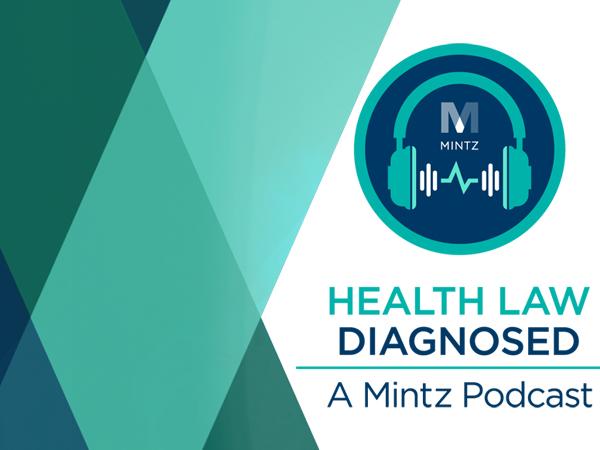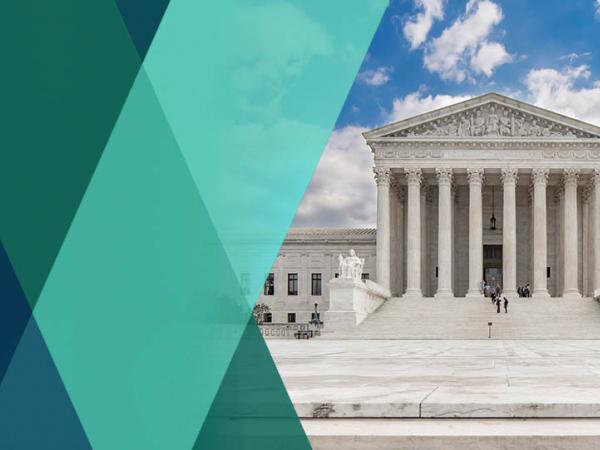
Health Care
Viewpoints
Filter by:
Bioethics in a Pandemic: Laying the Foundation for the Draft Framework for Equitable Allocation of a COVID-19 Vaccine
September 3, 2020 | Blog | By Bridgette Keller, Lauren Moldawer
Earlier this week, a committee of the National Academies sponsored by the CDC and NIH released its Draft Framework for Equitable Allocation of COVID-19 Vaccine. This Draft Framework builds on the successes and challenges of past vaccine allocation frameworks, as well as current frameworks for allocating scarce COVID-19 resources. This blog reviews these past frameworks that laid the foundation for the committee to develop its decision-making framework.
Read more
Bioethics in a Pandemic: Johns Hopkins Offers Ethics Framework to Support Vaccine Distribution Decisions
September 2, 2020 | Blog | By Bridgette Keller
The Johns Hopkins University Center for Health Security (the “Center”) has been providing thought leadership related to the novel coronavirus and the COVID-19 pandemic since the beginning of the year. Two of the Center’s recent reports relate directly to our discussion on vaccine distribution. The first is an interim framework for COVID-19 vaccine allocation and distribution (the “Report”), and the second focuses on the public’s role in COVID-19 vaccination. Here, we provide a high-level overview of the first report. We’ll dive into the second report in a separate blog post.
Read more
Hot off the Presses! Draft Preliminary Framework for Equitable Allocation of COVID-19 Vaccine Just Released
September 1, 2020 | Blog | By Bridgette Keller, David Friedman
Earlier today, the Committee on Equitable Allocation of Vaccine for the Novel Coronavirus released preliminary guidelines on the allocation of initial and limited supplies of a forthcoming COVID-19 vaccine. Once finalized, this framework will inform how policymakers and health professionals should initially prioritize vaccine recipients, taking into account factors such as mitigating community spread, maximizing public health benefits, and ensuring equitable vaccine access for underserved communities.
Though the turnaround time is short, there are two ways for interested stakeholders and member of the public to submit feedback regarding the draft plan:
1. Speak at TOMORROW’s Public Listening Session (September 2, 12 PM EDT). Speakers must adhere to a strict 5-minute time limit and submit their interest in speaking in advance.
2. Submit Written Comment by September 4 at 11:59 PM EDT. Comments and uploaded materials will be made available in the Committee’s Public Access File and should be submitted at this link.
Read more
Though the turnaround time is short, there are two ways for interested stakeholders and member of the public to submit feedback regarding the draft plan:
1. Speak at TOMORROW’s Public Listening Session (September 2, 12 PM EDT). Speakers must adhere to a strict 5-minute time limit and submit their interest in speaking in advance.
2. Submit Written Comment by September 4 at 11:59 PM EDT. Comments and uploaded materials will be made available in the Committee’s Public Access File and should be submitted at this link.
Bioethics in a Pandemic: Learning from the Past
September 1, 2020 | Blog | By Bridgette Keller, David Friedman
As we continue to discuss the ethical considerations related to the distribution of a safe and effective coronavirus vaccine, it is important to consider lessons learned from other pandemics. Though the particular facts of past pandemics of course differ from those of COVID-19, the goal of public health has always been to promote and protect the health and well-being of a population. Similarly, the ethical distribution of resources amid any pandemic is supported by the balance and tension among the four ethics principles: autonomy, justice, beneficence, and nonmaleficence. Here, we look at lessens learned from the poliovirus, ebolavirus, and 2009 H1N1 pandemics, as well as the National Pandemic Strategy related to vaccine distribution.
Read more
Indictment of Pharmacy Marketer Reveals Unsuccessful Efforts to Conceal Kickbacks
August 31, 2020 | Blog
The U.S. Department of Justice and U.S. Health and Human Services Office of Inspector General recently announced the indictment of a pharmacy marketer who allegedly received and paid kickbacks in violation of the federal Anti-Kickback Statute (AKS). While the alleged fraudulent scheme isn’t anything new, the actions that the marketer allegedly took to try to cover up the scheme serve as a good lesson.
Read more
CMS Announces One-Year Delay in Finalizing Highly Anticipated Stark Law Reform
August 27, 2020 | Blog | By Karen Lovitch, Rachel Yount
On Wednesday, August 26th, the Centers for Medicare & Medicaid Services (CMS) issued a notice extending the deadline to finalize significant proposed changes to the Physician Self-Referral Law (commonly known as the Stark Law) announced last year. CMS published the proposed rule on October 17, 2019 in tandem with a companion proposed rule issued by Department of Health and Human Services (HHS) Office of Inspector General (OIG) with equally sweeping changes to the Anti-Kickback Statute (AKS). Both rules were issued as part of CMS’s Regulatory Sprint to Coordinated Care and offer a number of industry-friendly changes designed to reduce regulatory burden associated with the Stark Law and the AKS and allow for increased adoption of value-based arrangements.
Read more
Bioethics in a Pandemic: The Basics
August 26, 2020 | Blog | By Bridgette Keller, David Friedman
Before we continue our Bioethics in a Pandemic series, we thought it would be helpful to provide a quick overview of the various principles that inform ethical decision-making in the health care setting.
As you might imagine, providing health care to individuals with diverse background and values presents ethical choices for health care professionals every day, throughout the entire health care system – providers, administrators, policymakers, insurers, employers, and even the health care lawyers! Well-recognized bioethics scholars Tom Beauchamp and James Childress offer a principle-based approach to guide ethical decision-making in health care. The four principles are (1) Respect for Autonomy, (2) Nonmaleficence, (3) Beneficence, and (4) Justice.
Read more
As you might imagine, providing health care to individuals with diverse background and values presents ethical choices for health care professionals every day, throughout the entire health care system – providers, administrators, policymakers, insurers, employers, and even the health care lawyers! Well-recognized bioethics scholars Tom Beauchamp and James Childress offer a principle-based approach to guide ethical decision-making in health care. The four principles are (1) Respect for Autonomy, (2) Nonmaleficence, (3) Beneficence, and (4) Justice.
Seventh Circuit Adds to Circuit Split Over Standard for DOJ Dismissals in FCA Cases
August 25, 2020 | Blog | By Laurence Freedman, Geoffrey Friedman, Caitie Hill
The Seventh Circuit Court of Appeals recently decided a case that created a new standard to assess requests by the Department of Justice (DOJ) to dismiss declined qui tam (whistleblower) suits under the False Claims Act (FCA). See U.S. ex rel. CIMZNHCA LLC V. UCB Inc. et al., No. 19-2273 (7th Cir. 2020). Prior to this decision, federal Courts of Appeals applied either the Sequoia Orange standard or the Swift standard, discussed below. In this decision, the Seventh Circuit opined that the standard should be informed by Federal Rule of Civil Procedure (FRCP) 41, and this standard “lies much nearer to Swift.” The Seventh Circuit also decided a key jurisdictional issue: whether the United States can appeal a denial of its motion to dismiss a declined qui tam action. Again, taking a new tack, the panel resolved this issue by construing the motion to dismiss also as a motion to intervene and construing the district court’s decision as a denial of that motion, thus obviating the need to invoke the collateral order doctrine.
Read more
OCR Updates Guidance to Clarify That Health Plans May Contact Recovered COVID-19 Patients About Plasma Donation
August 25, 2020 | Blog
As we discussed in our previous blog post, the Department of Health and Human Services’ Office for Civil Rights (OCR) released guidance this past June to address how health care providers could contact, in a HIPAA-compliant manner, recovered COVID-19 patients to provide them with information about donating blood and plasma to potentially help other COVID-19 patients. On August 24, OCR released an updated version of that guidance to address similar communications from health plans. The amended guidance provides that health plans may also reach out to recovered COVID-19 patients about blood and plasma donation, subject to the same restrictions applicable to health care providers.
Read more
With Release of New Guidance, FDA Signals It’s Serious About Enforcing Clinical Trial Data Requirements
August 20, 2020 | Blog | By Joanne Hawana
Clinical trial sponsors and principal investigators can consider themselves on notice that the Food & Drug Administration (FDA) is poised to ramp up enforcement activity relating to responsible parties’ obligations regarding clinical trial registration and results reporting. In a new guidance it released on August 12, 2020, FDA outlines how it intends to identify parties who have failed to register a clinical trial on, or submit results to, the ClinicalTrials.gov databank, as required by the FDA Amendments Act of 2007 and final regulations promulgated in 2016 by the National Institutes of Health (NIH).
Read more
Bioethics in a Pandemic: Vaccine Distribution
August 19, 2020 | Blog | By Bridgette Keller, David Friedman
After months of stay-at-home orders, quarantine protocols, social distancing, and back-to-school planning, the ever- present question on everyone’s mind is, When will we get back to business as usual? For many, the answer involves discussion of a safe and effective vaccine, including when it will be available and who will be able to get it. Even though a vaccine likely won’t be available until 2021 at the earliest, experts are already thinking about how to distribute it. This post is the first in a blog series that will consider the various bioethics issues and principles related to the COVID-19 pandemic.
Read more
Recent DOJ Comments Shed Light on Expected Civil Enforcement of COVID-19 Cases
August 18, 2020 | Blog | By Nicole Henry, Karen Lovitch
Comments made by Department of Justice attorneys during a recent webinar provided insight into the government’s civil enforcement priorities related to the coronavirus pandemic. In particular, government attorneys expect that civil enforcement related to COVID-19 relief funds will focus on certifications made by applicants seeking loan forgiveness and anticipate increased investigations into telemedicine services.
Read more
CMS Proposes Additional Cuts to Part B Reimbursement of 340B Drugs
August 7, 2020 | Blog | By Daryl Berke
On August 4th, the Department of Health and Human Services (HHS) Centers for Medicare and Medicaid Services (CMS) published the 2021 Hospital Outpatient Prospective Payment System (OPPS) proposed rule. The rule proposes to cut Medicare Part B reimbursement for 340B drugs by an additional 6% in 2021 and comes days after the D.C. Court of Appeals upheld a 340B rate reduction of nearly 30% in the 2018, 2019, and 2020 OPPS rules. The agency is relying on data collected through a recent 340B acquisition cost survey to justify the additional rate reduction.
Read more
FDA Greenlights Updates to the Purple Book Database
August 6, 2020 | Blog
As promised, the Food and Drug Administration (FDA) updated the Purple Book: Database of FDA-licensed Biological Products, providing greater transparency and a more user-friendly search functionality for the biological product and biosimilar industries. Earlier this year, FDA transitioned the Purple Book to a searchable online database. The August 3, 2020 release offers additional information on all FDA-licensed allergenic, cellular and gene therapy, hematologic, and vaccine products regulated by the Center for Biologics Evaluation and Research (CBER) expanding the dataset used by the database. FDA also updated the available exclusivity information for further industry ease of reference. This update is the next phase of the agency’s plan to improve the accessibility of information related to biological products through expansion and digitization.
Read more
Telehealth Update: CMS Proposed CY 2021 Payment Policies, Extension of the Public Health Emergency, Increasing Access after COVID-19, and the Coronavirus Stimulus Package
August 5, 2020 | Blog | By Cassandra Paolillo, Ellen Janos
On August 4, CMS posted a proposed rule on CY 2021 Payment Policies, which included important updates about the expansion of Medicare covered telehealth services due to the COVID-19 pandemic. Here, we cover this and other important developments related to telehealth access during the pandemic and beyond.
Read more
340B Rate Cuts Are Legal, D.C. Circuit Court Holds
August 4, 2020 | Blog | By Daryl Berke
This week, the Friday surprise came courtesy of the D.C. Court of Appeals. In a long-awaited split decision, the court ruled that the U.S. Department of Health and Human Services (HHS) acted lawfully when it reduced Medicare Part B reimbursement to hospitals for 340B drugs by nearly 30%. The reduction in Part B reimbursement was originally proposed in the 2018 Outpatient Prospective Payment Services (OPPS) rule. HHS estimated it would reduce total Part B spending by $1.6 billion annually, and save Medicare beneficiaries millions in copayments. Covered entities sued to overturn the rate cut, and litigation has been ongoing since the rate cut was implemented in early 2018.
Read more
Massachusetts U.S. Attorney’s Office Enters into MOU with Office of the Special Inspector General for Pandemic Recovery
July 30, 2020 | Blog | By Karen Lovitch, Caitie Hill
United States Attorney Andrew E. Lelling recently announced that the U.S. Attorney’s Office for the District of Massachusetts entered into a Memorandum of Understanding with Special Inspector General Brian D. Miller of the Office of the Special Inspector General for Pandemic Recovery to investigate and prosecute fraud in the distribution of the funds authorized by the Coronavirus Aid, Relief, and Economic Security.
Read more
363 Sales as a Health Care M&A Tool, Part 1 – Overview
July 28, 2020 | Blog | By Deborah Daccord, William Kannel, Tim McKeon
Although health care may be well positioned to weather an economic downturn as an industry, certain sectors, including ambulatory surgery, vision, dermatology, dental, and other physician practices will bear the brunt of COVID-19 stay-at-home orders and patients delaying non-emergency care. While the onset of COVID-19 has delayed or derailed many transactions, strategic buyers should consider all of the different transaction tools available them to help maximize value and successfully get to closing. For knowledgeable investors and strategic buyers, now is the time to position yourself to acquire valuable health care assets at steep discounts.
For those unfamiliar with 363 Sales, a 363 Sale couples a flexible and fast process with ample liability protection for willing buyers. The primary benefit to a 363 Sale is that a buyer can acquire the debtor’s assets free and clear of virtually all liens, claims and encumbrances burdening the assets and the debtor. When a target is experiencing severe financial distress, the benefit of acquiring assets “free and clear of all liens” is extraordinarily valuable.
Read more
For those unfamiliar with 363 Sales, a 363 Sale couples a flexible and fast process with ample liability protection for willing buyers. The primary benefit to a 363 Sale is that a buyer can acquire the debtor’s assets free and clear of virtually all liens, claims and encumbrances burdening the assets and the debtor. When a target is experiencing severe financial distress, the benefit of acquiring assets “free and clear of all liens” is extraordinarily valuable.
Trump Administration Releases Series of Executive Orders on Drug Pricing
July 27, 2020 | Blog | By Xavier Hardy, Daryl Berke
The Trump Administration issued a series of Executive Orders (“EOs” or “Orders”) Friday afternoon related to drug pricing. Several of the EOs seek to restart stalled or withdrawn policy initiatives previously announced by the Administration. Brief summaries of the EOs are below, and we will provide more detailed analysis this week.
Read more
Beyond COVID: House Committee Advances Several FDA-Related Bills
July 23, 2020 | Blog | By Margaret Jewett
Despite the COVID-19 pandemic, the House Energy & Commerce Committee continues work on several health policy issues, including Orphan Drug Act reform and continuous manufacturing.
Read more
Explore Other Viewpoints:
- Data Centers & Digital Infrastructure
- AI: The Washington Report
- Antitrust and Federal Regulation
- Appellate
- Arbitration, Mediation & Alternate Dispute Resolution
- Artificial Intelligence
- Awards
- Bankruptcy & Restructuring
- California Land Use
- Cannabis
- Class Action
- Complex Commercial Litigation
- Construction
- Consumer Product Safety
- Corporate Governance (ESG)
- Cross-Border Asset Recovery
- DEI Legal Developments
- Debt Financing
- Direct Investing (M&A)
- Diversity
- EB-5 Financing
- Education & Nonprofits
- Employment
- EnforceMintz
- Environmental (ESG)
- Environmental Enforcement Defense
- Environmental Law
- Environmental, Social, and Corporate Governance (ESG)
- FDA Regulatory
- False Claims Act
- Federal Circuit Appeals
- Financial Institution Litigation
- Government Law
- Growth Equity
- Health Care
- Health Care Compliance, Fraud and Abuse, & Regulatory Counseling
- Health Care Enforcement & Investigations
- Health Care Transactions
- Health Information Privacy & Security
- IP Due Diligence
- IPRs & Other Post Grant Proceedings
- Immigration
- Impacts of a New US Administration
- Insolvency & Creditor Rights Litigation
- Institutional Investor Class Action Recovery
- Insurance & Financial Services
- Insurance Consulting & Risk Management
- Insurance and Reinsurance Problem-Solving & Dispute Resolution
- Intellectual Property
- Investment Funds
- Israel
- Licensing & Technology Transactions
- Life Sciences
- Litigation & Investigations
- M&A Litigation
- ML Strategies
- Managed Care
- Medicare, Medicaid and Commercial Coverage & Reimbursement
- Mergers & Acquisitions
- Patent Litigation
- Patent Prosecution & Strategic Counseling
- Pharmacy Benefits and PBM Contracting
- Portfolio Companies
- Privacy & Cybersecurity
- Private Client
- Private Equity
- Pro Bono
- Probate & Fiduciary Litigation
- Products Liability & Complex Tort
- Projects & Infrastructure
- Public Finance
- Real Estate Litigation
- Real Estate Transactions
- Real Estate, Construction & Infrastructure
- Retail & Consumer Products
- Securities & Capital Markets
- Securities Litigation
- Social (ESG)
- Special Purpose Acquisition Company (SPACs)
- Sports & Entertainment
- State Attorneys General
- Strategic IP Monetization & Licensing
- Sustainable Energy & Infrastructure
- Tax
- Technology
- Technology, Communications & Media
- Technology, Communications & Media Litigation
- Trade Secrets
- Trademark & Copyright
- Trademark Litigation
- Unified Patent Court (UPC)
- Value-Based Care
- Venture Capital & Emerging Companies
- White Collar Defense & Government Investigations
- Women's Health and Technology








